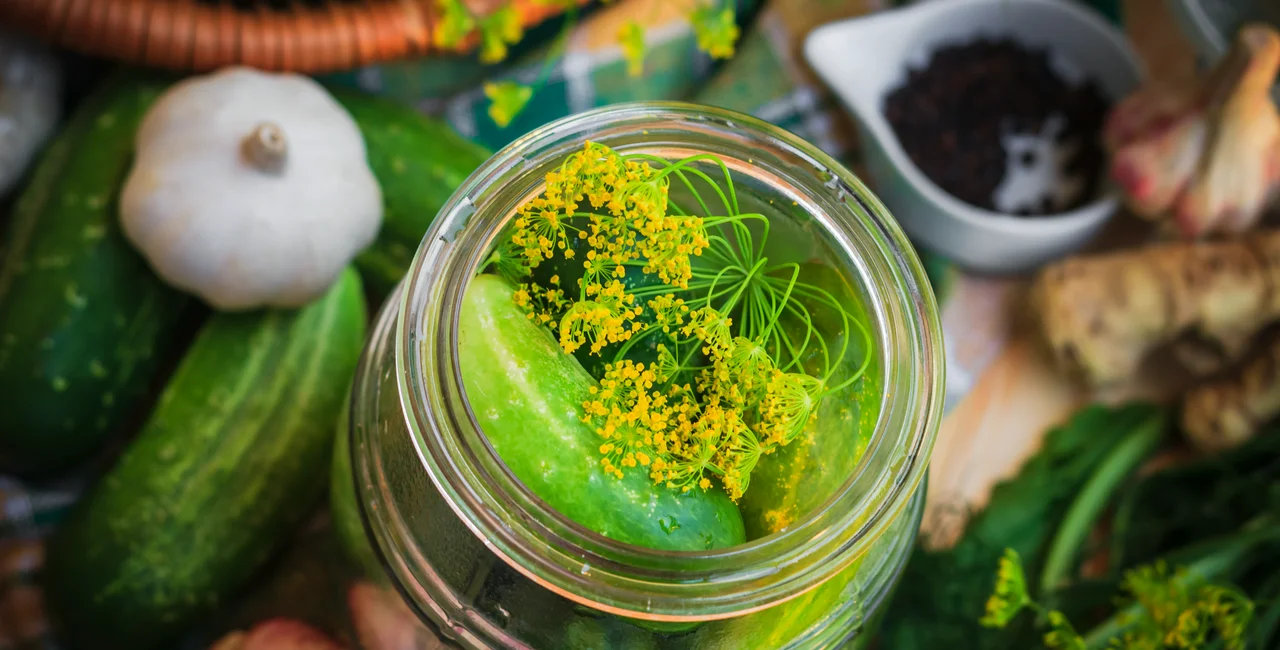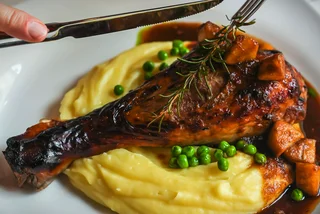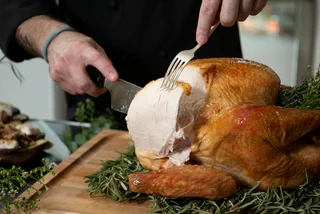The months of July and August are traditionally referred to by politics watchers as okurková sezona, a time when politicians take their holidays and the flow of political stories dwindles to a trickle, allowing outlandish stories about overgrown marrows to grab news headlines. Politics aside, it is literally cucumber season, that time of year when these cool and crunchy little treats appear in gardens, shops, and farmers' markets.
Cucumber plants are renowned for the boundless bounty that they can bear, and even with the best will in the world, there are only so many cucumber salads, gin and tonics, and bowls of tzatziki that a person can get through. The solution to a glut of cucumbers is to pickle them in brine, and capture their crispness to enjoy at a later date.
Traditional Czech fare generally does not perform well in the vegetable stakes, with variations on the holy trinity of meat, sauce, and dumplings taking up much space on the average menu. Although technically a fruit rather than a vegetable, pickled cucumbers provide a welcome addition of a tart crunch (and some vitamins) to the mix and can be produced as evidence of something green on a plate. As well as being a key ingredient in potato salad, they often appear on platters laden with meat, and can simply be enjoyed on their own, washed down with beer.
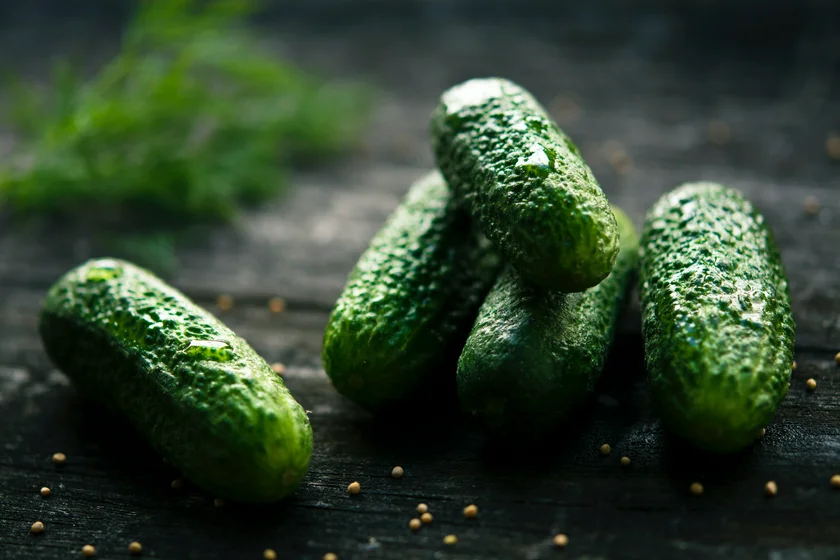
Making your own "kvašené okurky," or pickles fermented in brine, is a great way to use up a crop that you grow yourself and while enjoying the satisfaction and taste of a homemade product, without any additives.
Top tips for a crunchy pickle
Firmness is very important in pickles – you don’t want to end up with a jar of mush. These simple tips will help you achieve nice firm pickles:
- Choose crisp cucumbers to start with it. If you start off with giant mushy cucumbers, you’re setting yourself up for failure. To make good pickles, you need to start with good cucumbers. You should look out for small cucumbers that are about 8-10cm, fresh and firm, and have a thick skin.
- Pickle your cucumbers as soon after harvesting as possible. If you grow your own, pick them and pickle them immediately afterwards. If you’re sourcing them in a farmers’ market, try to buy them early in the day.
- Cut the blossom end off the cucumber. The blossom contains an enzyme that can make the cucumbers mushy. Cutting a small amount off the blossom end avoids this problem.
- Add some cherry, oak or grape leaves to the jars. They contain tannins which help keep the pickles firm.
You can also get inventive with your flavorings. Garlic, fresh dill, peppercorns, red chilies, horseradish, onions can all bring a little oomph to your pickles. Garlic should be peeled and bashed, chilies should be scored on one side with a sharp knife, and onions should be cut into quarters to help release the flavor.
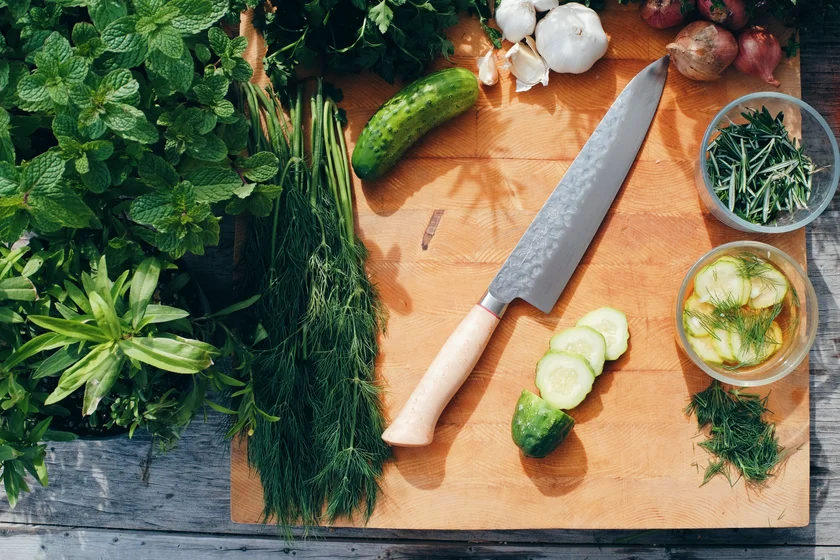
Note that the quantities below are just guidelines. Work to the number of jars that you have to fill, and make the brine in the ratio specified.
Method 1: Quick refrigerator pickles, with vinegar
- 450g small cucumbers
- 200ml vinegar
- 200ml water
- 1 tablespoon salt
- 3 teaspoons honey or sugar (optional, if you prefer sweeter pickles)
- Flavorings: Garlic, fresh dill, peppercorns, red chilies, horseradish, onions (optional)
- 1.Make the brine. Combine the vinegar, garlic, water, salt and sweetener. Bring to the boil, then simmer gently for 5 minutes, stirring occasionally. Allow to cool.
- 2.Place the cucumbers and flavorings into the jar. You should have at least 1.5cm headspace at the top of the jar.
- 3.Pour in the brine into the jar, place the lid on and place it in the fridge.
- 4.Wait at least 12 hours for the flavors to develop before tucking in.
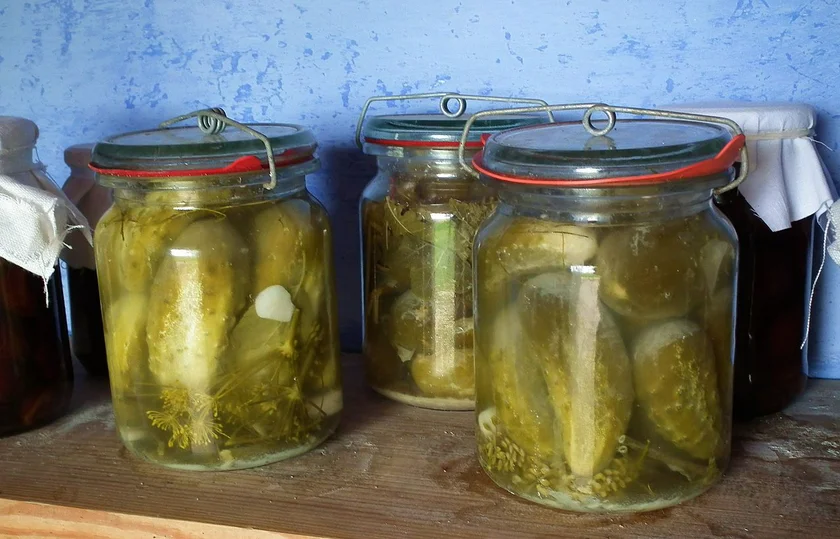
Method 2: Naturally fermented pickles, without vinegar
- 450g small cucumbers
- 500ml water
- 1 tablespoon salt
- Flavorings: Garlic, fresh dill, peppercorns, red chilies, horseradish, onions (optional)
- 1.This no-vinegar method requires a few days to allow for natural bacteria to do their work. The result is a tangy, fermented pickle, using just salt and water.
- 2.Make the brine. Heat half the water in a pot until boiling. Add the salt and stir until it dissolves. Turn off the heat, and add the remainder of the water to quickly cool the brine.
- 3.Place the pickle flavourings into a clean glass jar and add the cucumbers. Take care that the cucumbers at the top of the jar are wider than the neck of the jar, so that they will not float once the brine is added. It’s very important that the cucumbers remain submerged in brine, otherwise a mould can form.
- 4.Pour in the brine, taking care that the cucumbers are completely submerged. Leave at room temperature for up to a week to ferment, before moving into a fridge or a cold cellar, where the cool temperature will stop the fermentation process.












 Reading time: 4 minutes
Reading time: 4 minutes 